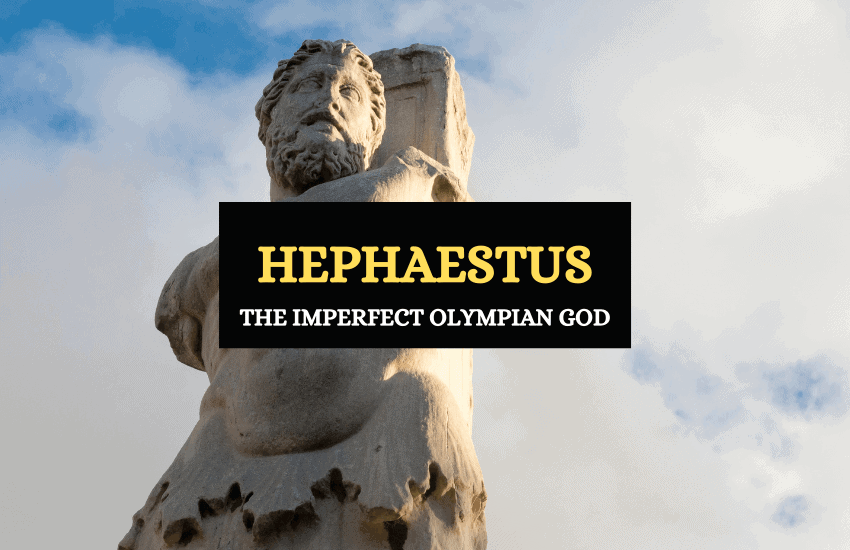
Table of Contents
Hephaestus (Roman equivalent Vulcan), also spelled Hephaistos, was the Greek god of blacksmiths, craftsmanship, fire, and metallurgy. He was the only god to be thrown out of Mt. Olympus and later return to his rightful place in the heavens. Depicted as ugly and deformed, Hephaestus was among the most resourceful and skilled of the Greek gods. Let’s take a look at his origins, symbols, and importance today.
Myth of Hephaestus
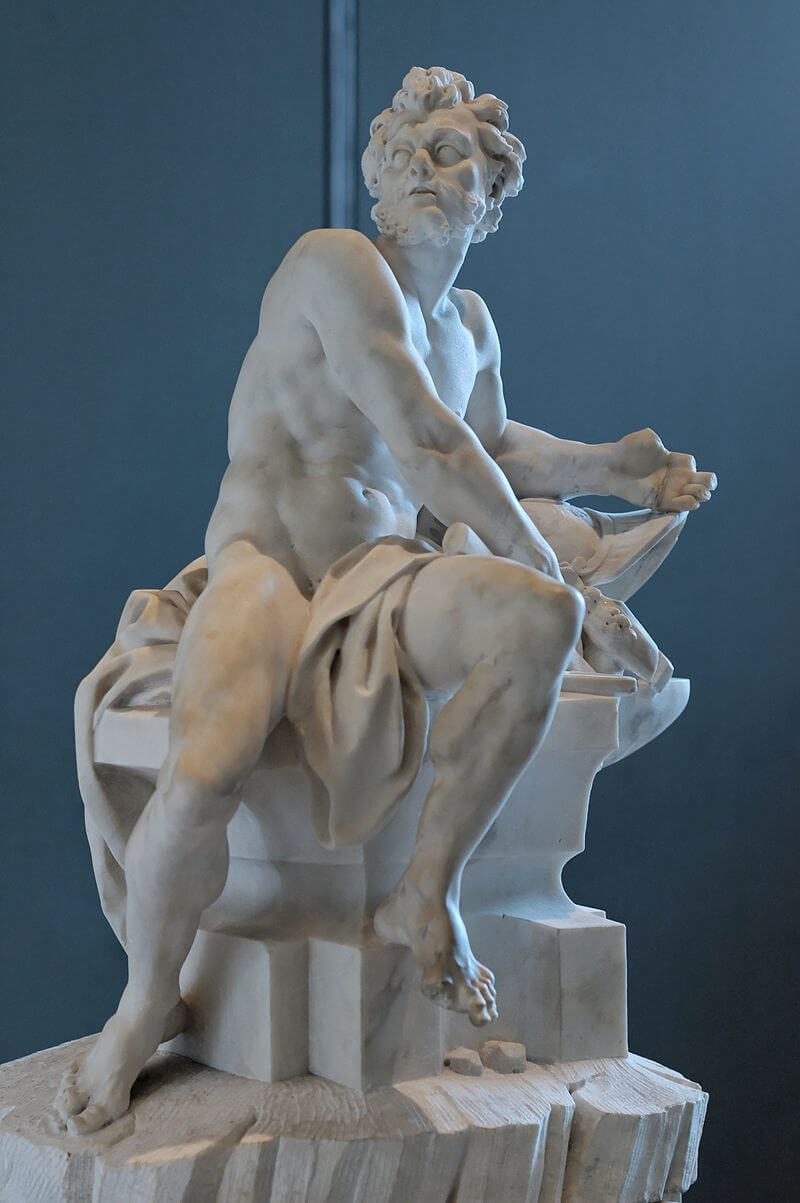
Hephaestus was the son of Hera and Zeus. However, some sources say that he was Hera’s alone, borne without a father. The poet Hesiod writes of a jealous Hera, who conceived Hephaestus alone because Zeus had given birth to Athena alone, without her.
1. Hephaestus’ Physical Form
Unlike the other gods, Hephaestus was not handsome or physically perfect. He is described as being ugly and lame. It’s not clear whether he was born lame or if he became lame after Hera cast him away from Mount Olympus (we’ll come to that in a bit).
Portrayals of Hephaestus show him as a bearded middle-aged man. He wears a Greek workman’s hat (pilos)and tunic (eximos). But sometimes, he’s depicted as a younger man with no beard. As a blacksmith, Hephaestus’ tools are of great significance to him. These are also his primary symbols: axes, chisels, saws, and mostly hammers and tongs.
So why was Hephaestus the ugly one? This may have risen from the fact that blacksmiths normally had injuries from their work with metal. The toxic fumes, the furnaces, and the dangerous tools posed hazards and oftentimes, would scar these workers. However, this isn’t explained in any specific source.
2. Exile from Mt. Olympus
In some versions of the myth, Zeus and Hera quarrelled and she then threw Hephaestus off Mount Olympus, disgusted by his ugliness. He landed on the island of Lemnos and was possibly crippled from the fall. However, the sea nymph Thetis looked after him until his ascent to heavens.
Hephaestus built his house and workshop by the island’s volcano, where he would hone his skills of metallurgy and invent his ground-breaking crafts. He remained here until Dionysus arrived to fetch him and return him to Mt. Olympus.
3. Hephaestus and Aphrodite
When Hephaestus returned to Mt. Olympus, Zeus ordered him to marry Aphrodite, the goddess of love. However, this was an uneven match and caused an uproar because Aphrodite was the goddess of beauty. How could she love someone like Hephaestus? But what’s more interesting is why Zeus ordered this marriage. There are two possible reasons for this.
In one version, Hera got stuck on a throne that Hephaestus had built for her. As a prize for freeing Hera from the throne, Zeus offered Aphrodite, the most beautiful goddess, to the blacksmith. Some Greek artists show Hera being held to the throne with invisible chains built by Hephaestus and portray the exchange as his scheme to wind up marrying Aphrodite, the goddess of love.
In other versions, Aphrodite’s dashing beauty caused uneasiness and conflict among the gods. To settle to dispute and maintain peace, Zeus ordered the marriage between Hephaestus and Aphrodite. Unlike the other gods, Hephaestus was not physically perfect. So, he hadn’t been viewed as a likely contender for Aphrodite’s hand, making him the best choice to end the competition peacefully.
4. Aphrodite’s Multiple Affairs
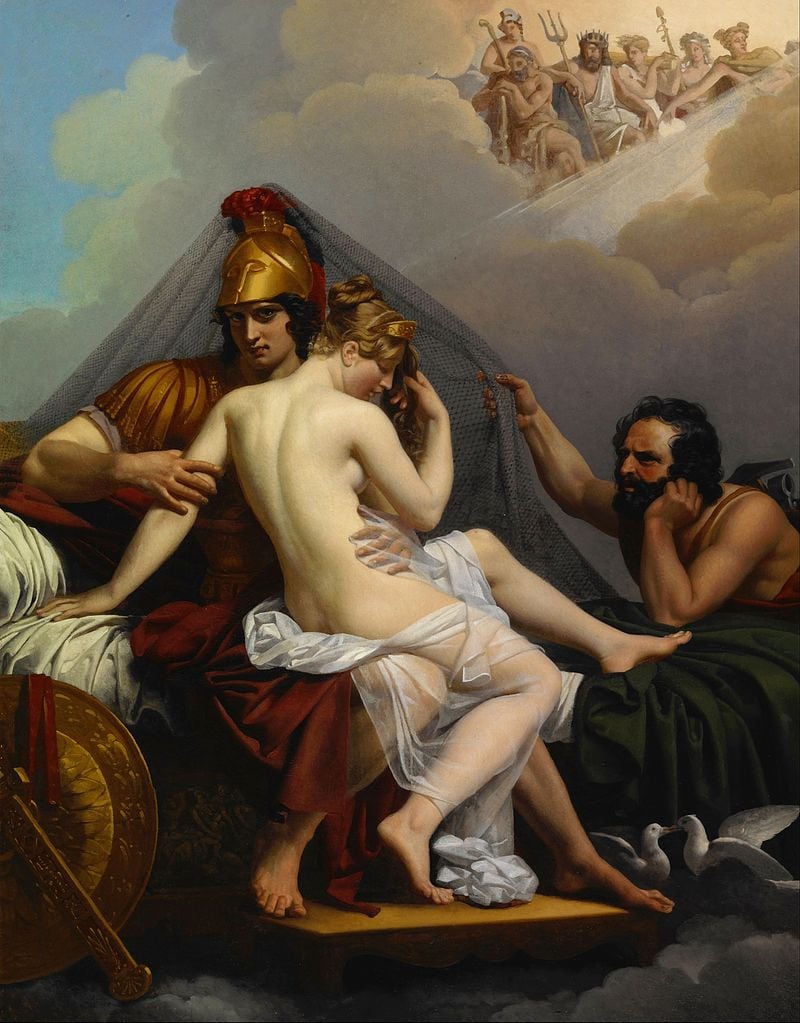
Sadly for Hephaestus, Aphrodite was never faithful to him. She had multiple affairs with other gods and mortals. But can we really blame her when she was forced to marry him, probably against her will?
One of the most famous accounts is her affair with Ares, the god of war. This illicit affair was exposed by Hephaestus with the help of a net he crafted. He used the net to trap Aphrodite and Ares together, thereby revealing their affair to all the gods on Mount Olympus. This story is recounted in Homer’s “Odyssey” among other sources.
In another myth, Aphrodite had a passionate affair with Adonis, a mortal of exceptional beauty. Aphrodite also had an affair with the mortal Anchises, resulting in the birth of Aeneas, a hero of the Trojan War and the legendary ancestor of Romulus and Remus, the founders of Rome. But Hephaestus doesn’t feature in these myths and is almost a background figure in Aphrodite’s life.
Hephaestus as a Master Craftsman
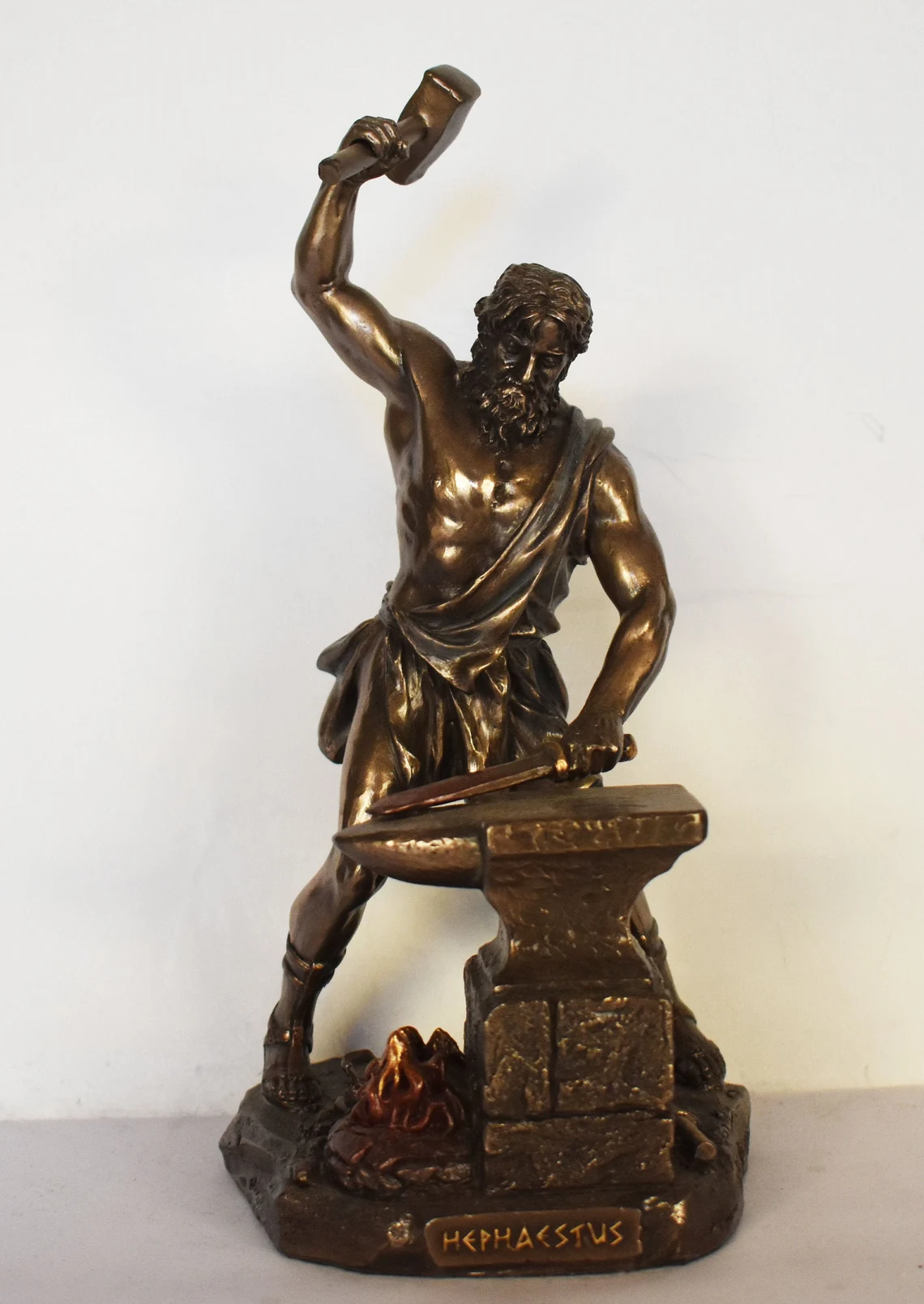
Hephaestus was a fine craftsman and a resourceful blacksmith who created stunning weapons and objects. Besides Hera’s golden throne, he crafted several masterpieces for the gods, as well as for human beings. Some of his best-known creations were the scepter and aegis of Zeus, the helmet of Hermes, and the locking doors on Hera’s chambers. There are several myths that show the excellent skills of Hephaestus. Here are some of the most noteworthy.
1. Creation of Pandora
Zeus commanded Hephaestus to sculpt the perfect woman out of clay. He gave instructions on the voice and the features the maiden was to have, which were meant to resemble the goddesses. Hephaestus sculpted Pandora, and Athena brought her to life. After she was created, she was named Pandora and received a gift from each god.
2. Creation of Prometheus’ Chains
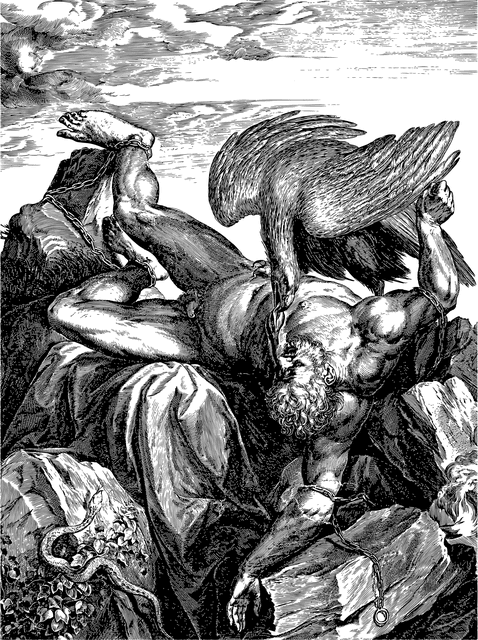
Following Zeus’ orders, Prometheus was chained to a mountain in the Caucasus as vengeance for having given fire to mankind. It was Hephaestus who fabricated Prometheus’ chains. In addition, an eagle was sent every day to eat Prometheus’ liver. The eagle was created by Hephaestus and brought to life by Zeus. In Aeschylus’ Prometheus Bound, Io asks Prometheus who chained him, and he answers, “Zeus by his will, Hephaistos by his hand”.
3. Hephaestus Against the Giants and Typhon
Because of Gaia’s attempts to dethrone Zeus, the gods fought two important wars against the Giants and the monster Typhon. When the war against the giants began, Zeus summoned all the gods to fight. Hephaestus, who was nearby, was one of the first ones to arrive. Hephaestus killed one of the giants by throwing melted iron on his face. In the war against Typhon, after Zeus managed to defeat Typhon, he threw a mountain on the monster and commanded Hephaestus to remain on the top as a guard.
4. Hephaestus Crafts Achilles’ Armor
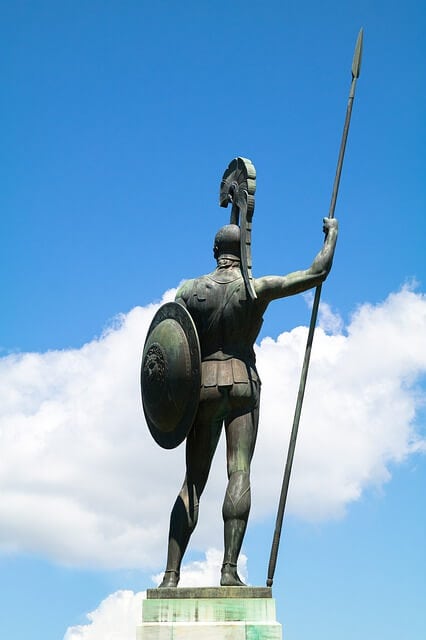
In Homer’s Iliad, Hephaestus forged Achilles’ armor for the Trojan war at the request of Thetis, Achilles’ mother. When Thetis knew her son would go into war, she visited Hephaestus to ask him to create a shining armor and a shield to protect him in battle. The god obliged and forged a masterpiece using bronze, gold, tin, and silver, which offered Achilles immense protection.
5. Hephaestus and the River-God
The river god, known as Xanthos to the gods and Skamandros to people, attacked Achilles during the Trojan War. As Hera wanted to protect Achilles from the attack, she requested Hephaestus to fight off Xanthos. Hephaestus fought the River-god with his fire. His flames burned the streams of the river, causing great pain. According to Homer, the fight went on until Hera intervened and eased both immortal beings.
6. Birth of Athens’ First King
In a failed attempt to rape Athena, Hephaestus’ semen fell on the thigh of the goddess. Disgusted by him. she cleaned her thigh with wool and threw it on the ground. And so, Erichthonius, an early king of Athens, was born. Because it was the ground that bore Erichthonius, he’s mother is supposed to be Gaia. She then gave the boy to Athena, who hid him from the other gods, and raised him.
Symbols Associated with Hephaestus
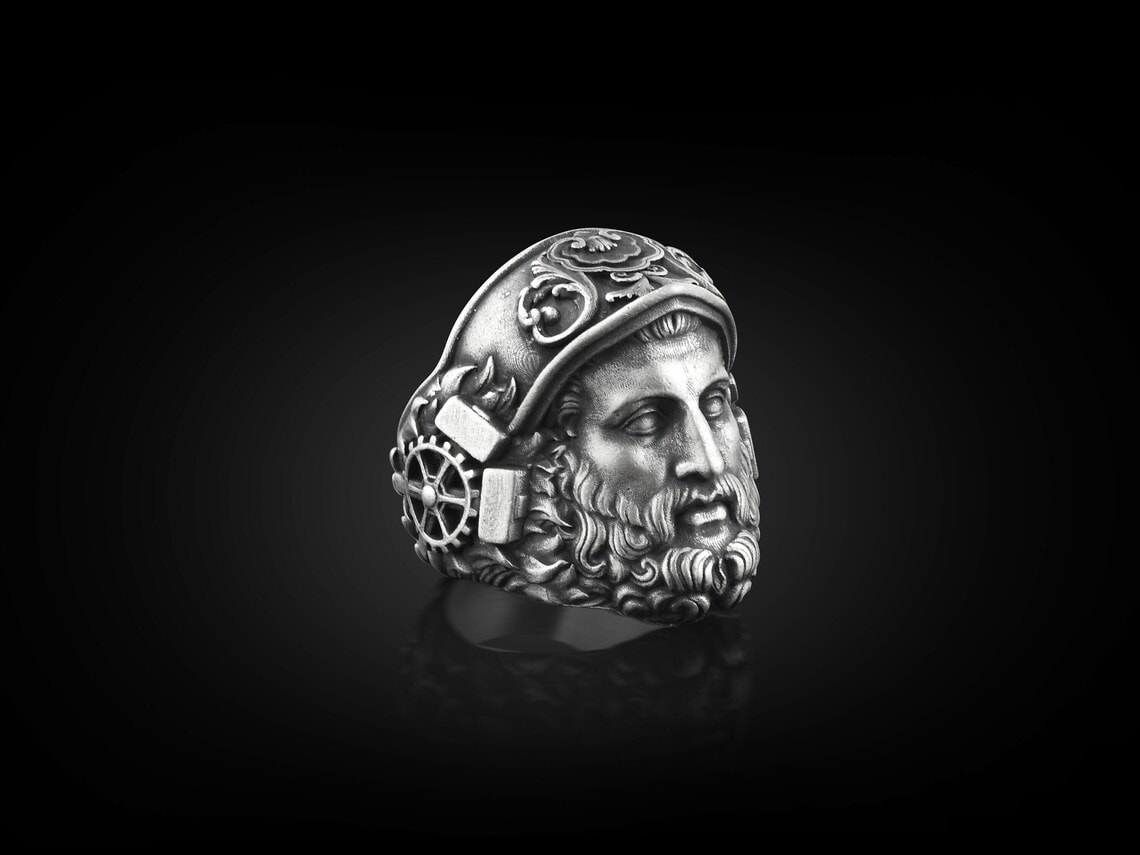
Like Athena, Hephaestus helped mortals by teaching them the arts. He was the patron of craftsmen, sculptors, masons and metalworkers, among others. Hephaestus is associated with several symbols, which represent him:
1. Volcanoes
Hephaestus is often associated with volcanoes, as they were believed to be his earthly forges. He used the fire and heat of a volcano for his blacksmithing to mold and shape metal into useful tools and beautiful works of art. The volcanic forge was a manifestation of his transformative power over raw materials.
2. Hammer
A hammer is one of Hephaestus’ most emblematic symbols. It’s not only a tool of his trade as a blacksmith but also signifies his strength and the capacity to mold and shape things. The rhythmic pounding of the hammer on metal was seen as the heartbeat of creative invention and industrious labor. While it may remind us of Thor’s hammer, Thor’s Mjölnir is a weapon symbolizing protection and strength, while Hephaestus’s hammer is a tool symbolizing creation and craftsmanship.
3. Anvil
The anvil represents the solid, unyielding aspect of the smith’s art. It is where the transformation of metal takes place. Hephaestus would heat metal until it was malleable, then use the anvil to give it form. Symbolically, the anvil stands for strength, durability, and resilience. It is the foundation on which creations are born.
4. Tongs
Tongs are tools used by blacksmiths to handle hot pieces of metal. They are crucial for Hephaestus’ work, allowing him to manipulate fiery-hot material safely. They symbolize his mastery over fire and his ability to shape the elements to his will.
5. Fire
Hephaestus is the god of fire, especially the fire of the forge. This makes him a fire god. Fire is both a creative and destructive force, and Hephaestus’ control over it signifies his role as a creative and industrial deity. The transformative power of fire is critical in the creation of new objects, just as Hephaestus would transform raw materials into objects of utility and beauty.
6. Donkey
Ancient Greek blacksmiths often used donkeys to power the bellows for their forges, and as such, the donkey became a symbol of the god himself. It represents labor, service, and humility. In many artworks, Hephaestus is shown riding on the back of a donkey. Some artists depict Hephaestus riding on a donkey when he returns to Olympus.
7. Quail
An unlikely association, quails are a symbol of Hephaestus. It’s not exactly clear why, but some speculate that it’s because quails have a lopsided way of walking. Perhaps it mirrored Hephaestus and, therefor, became his symbol.
Hephaestus vs. Vulcan: What are the Differences?
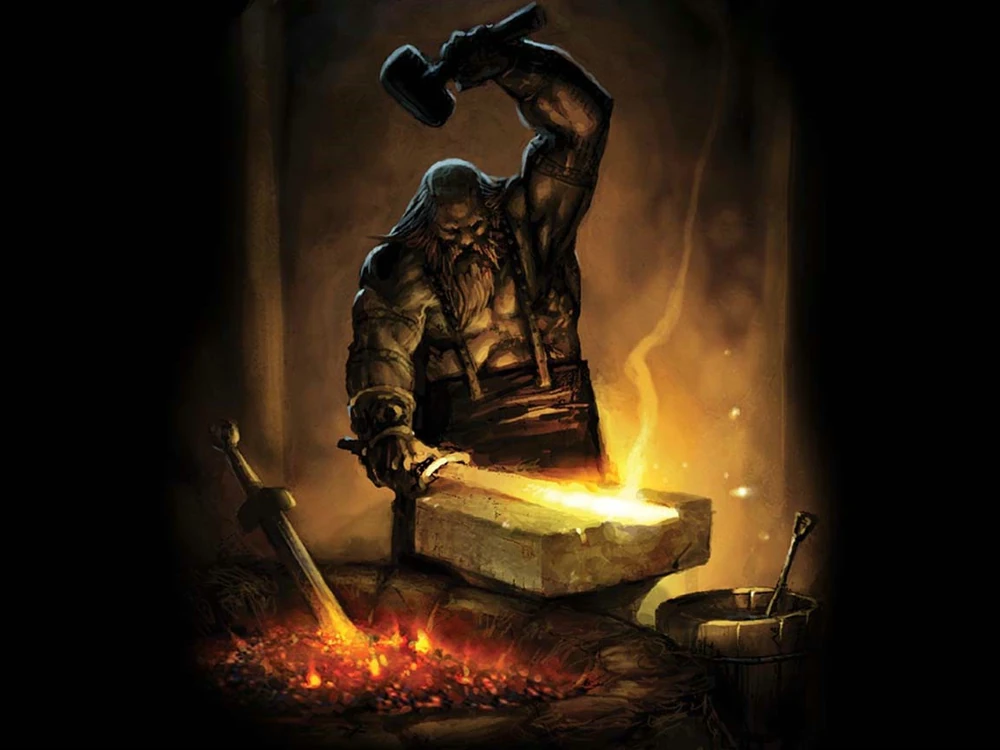
Hephaestus and Vulcan are essentially the same deity in two different pantheons, with Hephaestus being Greek and Vulcan being Roman. Both are the gods of fire, blacksmithing, metalworking, and craftsmanship. However, there are some differences between the two due to the distinct cultures and traditions of Greece and Rome.
Romans were heavily influenced by Greek mythology but adapted the characters to fit their own history and values. The Roman god Vulcan is also the god of fire and the forge, but his character is often less developed than that of Hephaestus. Roman myths often placed more emphasis on the civic and practical virtues of the gods, and less on their personal lives and struggles.
The Romans also had a specific festival dedicated to Vulcan, known as the Vulcanalia, which was held on August 23rd. During this celebration, people would light bonfires in honor of the god, asking him to avert destructive fires. However, Hephaestus doesn’t have an equivalent festival in Greek culture.
Both Hephaestus and Vulcan were associated with fire, but the Romans took this association further by making Vulcan the god of destructive fire, such as volcanoes and wildfires. His worship was often conducted to appease his fiery wrath and prevent disasters. In contrast, Hephaestus is a god of productive and creative fire.
Hephaestus Facts
Zeus and Hera, or Hera alone.
Hephaestus married Aphrodite. Aglaea is also one of his consorts.
Yes, he had 6 children called Thalia, Eucleia, Eupheme, Philophrosyne, Cabeiri, and Euthenia. But the numbers and names vary depending on the sources.
Hephaestus is the god of fire, metallurgy, and blacksmith.
Hephaestus crafted all the weapons for the gods and was the blacksmith to the gods.
There are two stories related to this. One states that he was born lame, while the other states that Hera threw him out of Olympus when still an infant because of his ugliness, which caused him to become lame.
It’s likely that she didn’t love him and was only married to him because she had been forced into it by Zeus.
Thetis saved Hephaestus when he fell on the island of Lemnos.
Vulcan
In Brief
Although Hephaestus’ story began with setbacks, he manages to win back his deserved place in Mt. Olympus with his hard work. His journey takes him from being cast out to being the blacksmith of gods. He remains among the most resourceful and skilled of the Greek gods.
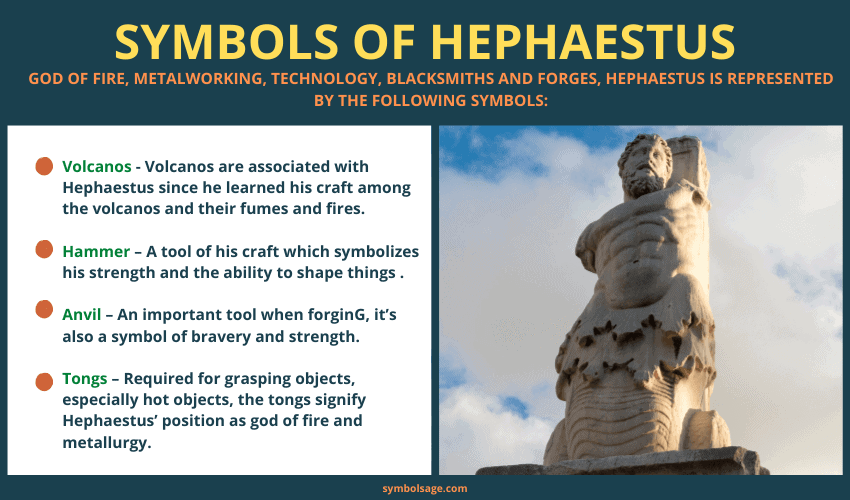
Related Articles:
Greek Gods (Twelve Olympian) and Their Symbols
Who is the Greek God Phosphorus?
The Power of Poseidon: Greek God of the Sea
Uranus – The Story of The Primordial Greek God of the Sky
Apollo – The Story of The Greek God of Music, Sun and Light








